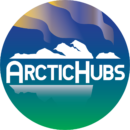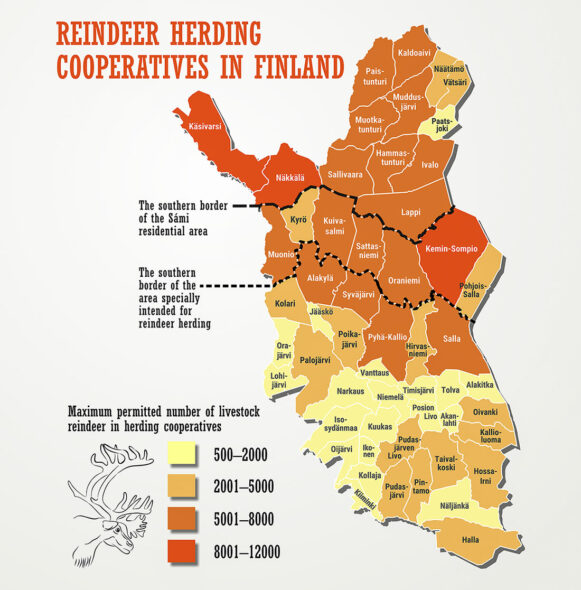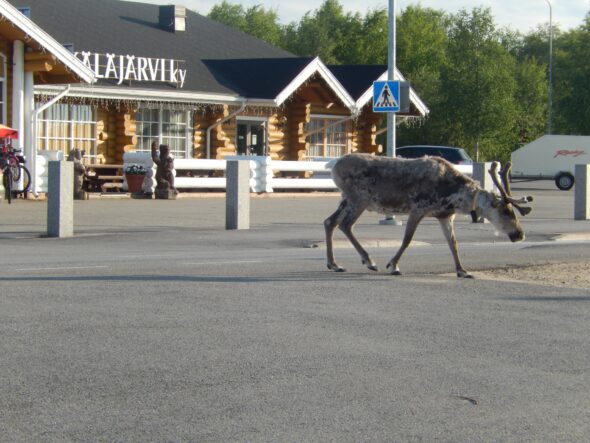
Inari, the municipality with the largest land area in Finland, grapples with intricate issues related to land use and livelihood management. Despite its sparse population, Inari holds significant importance as a central location for the vibrant indigenous Sámi culture in Finland. The recent ArcticHubs meeting held in Inari shed light on the complex interplay between tourism, reindeer herding, and the preservation of Sámi culture. This blog post seeks to provide a concise overview of the main discussions at the meeting and emphasises prospective scenarios and viable solutions for fostering sustainable development in the region.
Land-uses and livelihoods in Inari
Inari relies on the service industry, cold climate vehicle testing, and nature-based tourism as its main sources of employment and income. The region’s natural beauty and indigenous Sámi culture attract a significant number of foreign tourists, making it crucial to strike a balance between tourism and other livelihoods, particularly reindeer herding. The meeting emphasised the need to address concerns related to the use of Sámi culture in tourism and the impact of nature-based tourism on land use.
To effectively address the diverse concerns and sensitivities in Inari, the research team from LUKE has adopted a multi-faceted and co-creative approach, engaging with various local stakeholders and community members. The use of a participatory mapping tool called Maptionnaire proved to be particularly valuable in facilitating dialogue and gathering insights from the community. Furthermore, the Delphi method was employed to consider future policy perspectives and identify community priorities for the region.
Insights from the Skolt Sámi Community
The meeting took place at the Siida-Inari museum of Sámi culture, where Tiina Sanila-Aikio, a Sámi politician and chair of the association of Reindeer Herding Cooperatives of Finland, shared valuable insights on the challenges faced by the skolt Sámi community.
With their traditional reindeer herding areas spanning Finland, Norway, and Russia, the skolt Sámi have had to be continually resilient in sustaining their livelihoods and culture.
Tiina Sanila-Aikio emphasised that the Sámi peoples draw from a culture of coping, even in the face of new and shifting forms of adversity.
She also highlighted three fundamental ways in which the Sámi people cope with challenges;
- Firstly, they adapt to extreme weather conditions and optimise energy output to safely move from place to place.
- Secondly, they employ appropriate and adaptable clothing, structures, and materials to live in harmony with their environment.
- Lastly, they utilise a flexible food system throughout the year by engaging in reindeer herding, fishing, hunting, and gathering, ensuring sufficient nutrition.
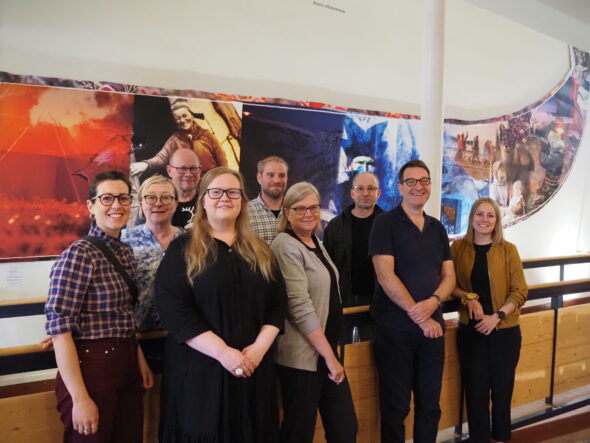
Future opportunities and threats
Looking ahead, Tiina Sanila-Aikio identified several opportunities and threats that will shape the region’s future. Responsible Sámi tourism was highlighted as a potential avenue for continued positive change in the Sámi area. Additionally, traditional livelihoods can offer solutions for coping with climate change. However, the meeting also raised concerns about increasingly competitive land use models, such as wind energy and mining, which may pose challenges without proper agreements or impact assessments. The impact of NATO membership on the region and the need to acknowledge Sámi people’s traditional ownership of land and waters were also discussed.
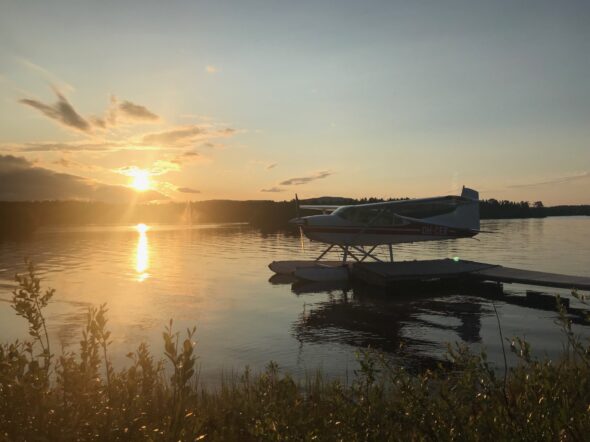
The ongoing ArcticHubs research and engagement in Inari hub is bringing valuable insights into the complex dynamics of land-uses and livelihoods in the region.
By ensuring longitudinal connections with local stakeholders and adopting participatory approaches, LUKE researchers were able to gain a deeper understanding of the challenges and opportunities faced by the community. Moving forward, it is seen to be crucial to strike a balance between tourism and other livelihoods, while also addressing concerns related to the preservation of Sámi culture and traditional land ownership.
ArcticHubs seeks to contribute to the long-term journey towards sustainable development also by examining future scenarios and exploring potential solutions. The project recognises the need for resilience in the face of climate change-induced transformations, aiming to foster sustainable development that can withstand these challenges.
